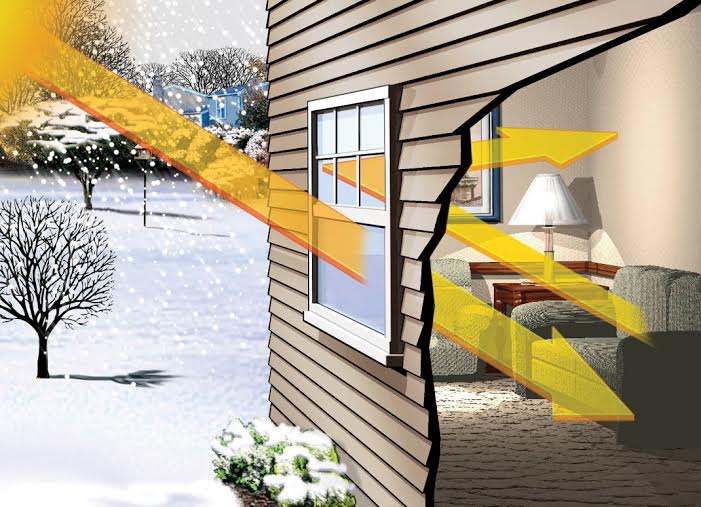Fall Is Here: Time to Rethink Home Energy Efficiency
Tomorrow marks the first day of fall and with winter suddenly on the horizon (shiver!) people are getting closer than ever to turning the thermostat on for the first time (insert sad face for those of us who love summer). As the inevitable chill in the air returns, many begin to consider their home energy costs.
Containing Heat Is Just as Important as Generating It
How you heat your home is just as important as how you contain that heat. Did you know that on average 15- 20% of all home energy is lost through windows and doors? Old, drafty windows can cost a home up to 40% of its energy. Yes, it’s true. You can upgrade your home heating and cooling systems with the most energy efficient systems (think ductless heat pump), but if your home isn’t insulated well, those changes won’t serve you effectively or efficiently.
Why Window Replacement Is Your First Line of Defense
Aside from sealing up any poorly insulated areas of your home, window replacement is often the first line of defense when it comes to keeping the heat in and the cold out. But where to start? If you’ve ever looked into window replacement you know that there are lots of energy efficiency ratings and even the most tech savvy of us can get lost.
Here’s a quick guide to help you navigate window energy efficiency ratings…
 STEP ONE:
STEP ONE:
First and foremost, when shopping for windows look for the ENERGY STAR service mark, an international standard for energy efficient products created by the Clinton administration in 1992. Consumer products carrying the ENERGY STAR service mark generally use 20 to 30 percent less energy than required by federal law.
STEP TWO:
Look at the U-Factor. U-Factors range from 0.14 to 1.20 and indicate how efficient a product is in preventing heat from escaping. Windows with lower U-Factors have a better insulating value and have a higher resistance to heat flow. At Coastal, our Preservation window line offers the lowest U-Factor on the market at .14.
STEP THREE:
Look at the Solar Heat Gain Coefficient. Solar Heat Gain Coefficient (SHGC) ranges from 0 to 1 and measures how well a product blocks heat created by sunlight. The lower a window’s solar heat gain coefficient, the less solar heat it transmits into the home. In cooler climates like the Northeast, people should seek slightly higher numbers so that the sun can help heat the home in winter. The highest SHGC value (paired with a low U-factor) is up to 0.58 and our Preservation windows offer this SHGC.
STEP FOUR:
Consider Visible Transmittance. Visible transmittance (VT) ranges from 0 to 1 and refers to how much visible light comes through a product. The higher the VT, the more light that’s transmitted. Choose a higher VT for rooms you want to fill with natural light. A very low VT rating would require artificial lighting even during the day.
Now that you know what to look for, want the best news? New energy efficient windows and doors can qualify you for energy tax credits! Check out Preservation’s website to see if you qualify! Our company offers the best products, service and warranties in the Massachusetts, New Hampshire and Rhode Island area. Our office is located in Beverly, MA but we install roofs, siding, windows and doors all over New England. Contact us today for a free estimate: 888-812-2783 .




